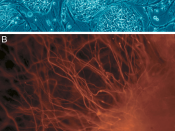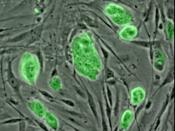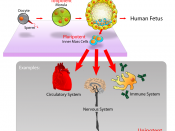Stem cell therapy in diabetes.
Stem cells offer a promising form of therapy in the treatment of diabetes. Diabetes mellitus is tragic disease which greatly reduces the individual's quality of life, as of yet it is unknown how to reduce the rapid increase in cases but it is thought that is genetic susceptibility being induced by the environment. (Todd, 2009) It is thought that by 2025 there will be 380 million sufferers worldwide. (McCall et al., 2010) Diabetes mellitus is a name given to a group of diseases which are characterised by high level of glucose present in the blood. The two main types of diabetes include diabetes type 1 where the body immune response attacks islet cells which are responsible for producing insulin one of the key hormones needed to regulate blood sugar levels. Type 2 diabetes which is characterised by insulin resistance as well as reduced secretion of insulin by beta cells.
Type 1 diabetes is treated with insulin and islet cell transplantation however there is a shortage of donors and supply cannot meet demand as well as the impact of lifelong immunosuppression, hence alternative forms of treatment being investigated. (McCall et al., 2010)
Figure 1: Showing the various sources of stems used in the production of insulin. Modified from (McCall et al., 2010)
One promising treatment method is the use of stem cell therapy in the treatment of diabetes. Stem cells are undifferentiated, self maintaining cells defined by there functional characteristics which includes the ability to produced a large number of differentiated cells, which are fully functional as well as the ability to regenerate tissue after it has been injured. (Potten and Loeffler, 1990)
There are two main catagories of stem cells which is illustrated in figure 2. the orange box includes stem cells found in adult...


